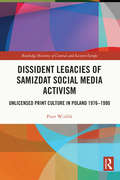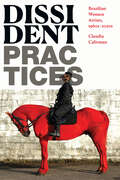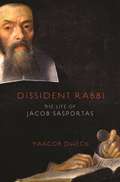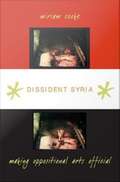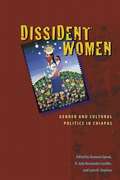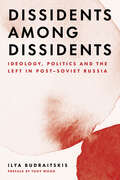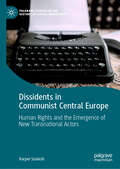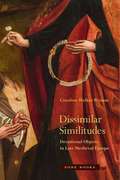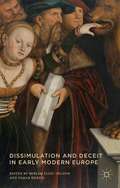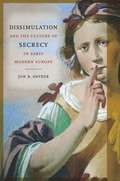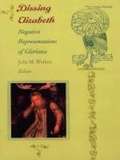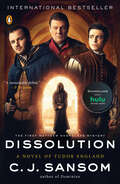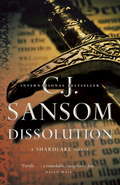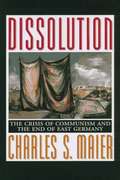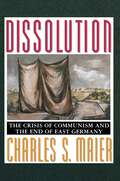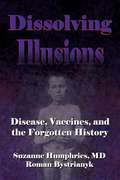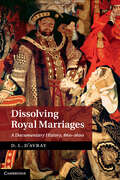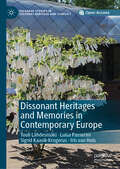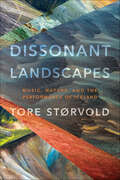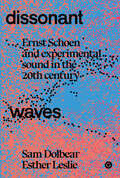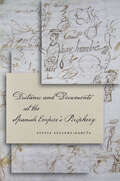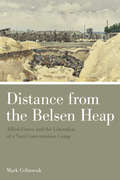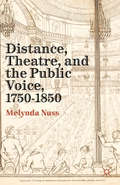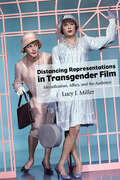- Table View
- List View
Dissident Legacies of Samizdat Social Media Activism: Unlicensed Print Culture in Poland 1976-1990 (Routledge Histories of Central and Eastern Europe)
by Piotr WciślikThis book tells the story of the dissident imaginary of samizdat activists, the political culture they created, and the pivotal role that culture had in sustaining the resilience of the oppositional movement in Poland between 1976 and 1990. This unlicensed print culture has been seen as one of the most emblematic social worlds of dissent. Since the Cold War, the audacity of harnessing obsolete print technology known as samizdat to break the modern monopoly of information of the party-state has fascinated many, yet this book looks beyond the Cold War frame to reappraise its historical novelty and significance. What made that culture resilient and rewarding, this book argues, was the correspondence between certain set of ideas and media practices: namely, the form of samizdat social media, which both embodied and projected the prefigurative philosophy of political action, asserting that small forms of collective agency can have a transformative effect on public life here and now, and are uniquely capable of achieving a democratic new beginning. This prefigurative vision of the transition from communism had a fundamental impact on the broader oppositional movement. Yet, while both the rise of Solidarity and the breakthrough of 1989 seemed to do justice to that vision, both pivotal moments found samizdat social media activists making history that was not to their liking. Back in the day, their estrangement was overshadowed by the main axis of contention between the society and the state. Foregrounding the internal controversies they protagonized, this book adds nuance to our understanding of the broader legacy of dissent and its relevance for the networked protests of today.
Dissident Practices: Brazilian Women Artists, 1960s–2020s
by Claudia CalirmanIn Dissident Practices, Claudia Calirman examines sixty years of visual art by prominent and emerging Brazilian women artists from the 1960s to the present, covering the period from the military dictatorship to the return to democracy in the mid-1980s, the social changes of the 2000s, the rise of the Right in the late-2010s, and the recent development of an overtly feminist art practice. Though they were lauded as key figures in Brazilian art, these artists still faced adversity and constraints because of their gender. Although many of them in the 1960s and 1970s disavowed the term feminism, Calirman gives a nuanced account of how they responded to authoritarianism, engaged with trauma in the aftermath of the military dictatorship, interrogated social gender norms, and fought against women’s objectification. By battling social inequalities, structures of power, and state violence, these artists create political agency in a society in which women remain targets of brutality and discrimination.
Dissident Rabbi: The Life of Jacob Sasportas
by Yaacob DweckIn 1665, Sabbetai Zevi, a self-proclaimed Messiah with a mass following throughout the Ottoman Empire and Europe, announced that the redemption of the world was at hand. As Jews everywhere rejected the traditional laws of Judaism in favor of new norms established by Sabbetai Zevi, and abandoned reason for the ecstasy of messianic enthusiasm, one man watched in horror. Dissident Rabbi tells the story of Jacob Sasportas, the Sephardic rabbi who alone challenged Sabbetai Zevi's improbable claims and warned his fellow Jews that their Messiah was not the answer to their prayers.Yaacob Dweck's absorbing and richly detailed biography brings to life the tumultuous century in which Sasportas lived, an age torn apart by war, migration, and famine. He describes the messianic frenzy that gripped the Jewish Diaspora, and Sasportas's attempts to make sense of a world that Sabbetai Zevi claimed was ending. As Jews danced in the streets, Sasportas compiled The Fading Flower of the Zevi, a meticulous and eloquent record of Sabbatianism as it happened. In 1666, barely a year after Sabbetai Zevi heralded the redemption, the Messiah converted to Islam at the behest of the Ottoman sultan, and Sasportas's book slipped into obscurity.Dissident Rabbi is the revelatory account of a spiritual leader who dared to articulate the value of rabbinic doubt in the face of messianic certainty, and a revealing examination of how his life and legacy were rediscovered and appropriated by later generations of Jewish thinkers.
Dissident Syria: Making Oppositional Arts Official
by Miriam CookeFrom 1970 until his death in 2000, Hafiz Asad ruled Syria with an iron fist. His regime controlled every aspect of daily life. Seeking to preempt popular unrest, Asad sometimes facilitated the expression of anti-government sentiment by appropriating the work of artists and writers, turning works of protest into official agitprop. Syrian dissidents were forced to negotiate between the desire to genuinely criticize the authoritarian regime, the risk to their own safety and security that such criticism would invite, and the fear that their work would be co-opted as government propaganda, as what miriam cooke calls "commissioned criticism. " In this intimate account of dissidence in Asad's Syria, cooke describes how intellectuals attempted to navigate between charges of complicity with the state and treason against it. A renowned scholar of Arab cultures, cooke spent six months in Syria during the mid-1990s familiarizing herself with the country's literary scene, particularly its women writers. While she was in Damascus, dissidents told her that to really understand life under Hafiz Asad, she had to speak with playwrights, filmmakers, and, above all, the authors of "prison literature. " She shares what she learned in Dissident Syria. She describes touring a sculptor's studio, looking at the artist's subversive work as well as at pieces commissioned by the government. She relates a playwright's view that theater is unique in its ability to stage protest through innuendo and gesture. Turning to film, she shares filmmakers' experiences of making movies that are praised abroad but rarely if ever screened at home. Filled with the voices of writers and artists, Dissident Syria reveals a community of conscience within Syria to those beyond its borders.
Dissident Women: Gender and Cultural Politics in Chiapas
by Shannon SpeedDrawing from studies on topics ranging from the daily life of Zapatista women to the effect of transnational indigenous women in tipping geopolitical scales, the contributors explore both the personal and global implications of indigenous women's activism. The Zapatista movement and the Women's Revolutionary Law, a charter that came to have tremendous symbolic importance for thousands of indigenous women, created the potential for renegotiating gender roles in Zapatista communities. Drawing on the original research of scholars with long-term field experience in a range of Mayan communities in Chiapas and featuring several key documents written by indigenous women articulating their vision, Dissident Women brings fresh insight to the revolutionary crossroads at which Chiapas stands—and to the worldwide implications of this economic and political microcosm.
Dissidents among Dissidents: Ideology, Politics and the Left in Post-Soviet Russia
by Ilya BudraitskisHow have the fall of the USSR and the long dominance of Putin reshaped Russian politics and culture?Ilya Budraitskis, one of the country's most prominent leftist political commentators, explores the strange fusion of free-market ideology and postmodern nationalism that now prevails in Russia, and describes the post-Soviet evolution of its left. He incisively describes the twists and contradictions of the Kremlin's geopolitical fantasies, which blend up-to-date references to "information wars" with nostalgic celebrations of the tsars of Muscovy. Despite the revival of aggressive Cold War rhetoric, he argues, the Putin regime takes its bearings not from any Soviet inheritance, but from reactionary thinkers such as the White émigré Ivan Ilyin.Budraitskis makes an invaluable contribution by reconstructing the forgotten history of the USSR's dissident left, mapping an entire alternative tradition of heterodox Marxist and socialist thought from Khrushchev's Thaw to Gorbachev's perestroika. Doubly outsiders, within an intelligentsia dominated by liberal humanists, they offer a potential way out of the impasse between condemnations of the entire Soviet era and blanket nostalgia for Communist Party rule--suggesting new paths for the left to explore.
Dissidents in Communist Central Europe: Human Rights and the Emergence of New Transnational Actors (Palgrave Studies in the History of Social Movements)
by Kacper SzuleckiThis monograph traces the history of the dissident as a transnational phenomenon, exploring Soviet dissidents in Communist Central Europe from the mid-1960s until 1989. It argues that our understanding of the transnational activist would not be what it is today without the input of Central European oppositionists and ties the term to the global emergence and evolution of human rights. The book examines how we define dissidents and explores the association of political resistance to authoritarian regimes, as well as the impact of domestic and international recognition of the dissident figure. Turning to literature to analyse the meaning and impact of the dissident label, the book also incorporates interviews and primary accounts from former activists. Combining a unique theoretical approach with new empirical material, this book will appeal to students and scholars of contemporary history, politics and culture in Central Europe.
Dissimilar Similitudes: Devotional Objects in Late Medieval Europe
by Caroline Walker BynumFrom an acclaimed historian, a mesmerizing account of how medieval European Christians envisioned the paradoxical nature of holy objectsBetween the twelfth and the sixteenth centuries, European Christians used in worship a plethora of objects, not only prayer books, statues, and paintings but also pieces of natural materials, such as stones and earth, considered to carry holiness, dolls representing Jesus and Mary, and even bits of consecrated bread and wine thought to be miraculously preserved flesh and blood. Theologians and ordinary worshippers alike explained, utilized, justified, and warned against some of these objects, which could carry with them both anti-Semitic charges and the glorious promise of heaven. Their proliferation and the reaction against them form a crucial background to the European-wide movements we know today as “reformations” (both Protestant and Catholic).In a set of independent but inter-related essays, Caroline Bynum considers some examples of such holy things, among them beds for the baby Jesus, the headdresses of medieval nuns, and the footprints of Christ carried home from the Holy Land by pilgrims in patterns cut to their shape or their measurement in lengths of string. Building on and going beyond her well-received work on the history of materiality, Bynum makes two arguments, one substantive, the other methodological. First, she demonstrates that the objects themselves communicate a paradox of dissimilar similitude—that is, that in their very details they both image the glory of heaven and make clear that that heaven is beyond any representation in earthly things. Second, she uses the theme of likeness and unlikeness to interrogate current practices of comparative history. Suggesting that contemporary students of religion, art, and culture should avoid comparing things that merely “look alike,” she proposes that humanists turn instead to comparing across cultures the disparate and perhaps visually dissimilar objects in which worshippers as well as theorists locate the “other” that gives their religion enduring power.
Dissimulation and Deceit in Early Modern Europe
by Miriam Eliav-Feldon Tamar HerzigIn this book, twelve scholars of early modern history analyse various categories and cases of deception and false identity in the age of geographical discoveries and of forced conversions: from two-faced conversos to serial converts, from demoniacs to stigmatics, and from self-appointed ambassadors to lying cosmographer.
Dissimulation and the Culture of Secrecy in Early Modern Europe
by Jon R. Snyder"Larvatus prodeo," announced René Descartes at the beginning of the seventeenth century: "I come forward, masked." Deliberately disguising or silencing their most intimate thoughts and emotions, many early modern Europeans besides Descartes-princes, courtiers, aristocrats and commoners alike-chose to practice the shadowy art of dissimulation. For men and women who could not risk revealing their inner lives to those around them, this art of incommunicativity was crucial, both personally and politically. Many writers and intellectuals sought to explain, expose, justify, or condemn the emergence of this new culture of secrecy, and from Naples to the Netherlands controversy swirled for two centuries around the powers and limits of dissimulation, whether in affairs of state or affairs of the heart. This beautifully written work crisscrosses Europe, with a special focus on Italy, to explore attitudes toward the art of dissimulation in the sixteenth and seventeenth centuries. Discussing many canonical and lesser-known works, Jon R. Snyder examines the treatment of dissimulation in early modern treatises and writings on the court, civility, moral philosophy, political theory, and in the visual arts.
Dissing Elizabeth: Negative Representations of Gloriana
by Julia M. WalkerDissing Elizabeth focuses on the criticism that cast a shadow on the otherwise celebrated reign of Elizabeth I. The essays in this politically and historically revealing book demonstrate the sheer pervasiveness and range of rhetoric against the queen, illuminating the provocative discourse of disrespect and dissent that existed over an eighty-year period, from her troubled days as a princess to the decades after her death in 1603.As editor Julia M. Walker suggests, the breadth of dissent considered in this collection points to a dark side of the Cult of Elizabeth. Reevaluating neglected texts that had not previously been perceived as critical of the queen or worthy of critical appraisal, contributors consider dissent in a variety of forms, including artwork representing (and mocking) the queen, erotic and pornographic metaphors for Elizabeth in the popular press, sermons subtly critiquing her actions, and even the hostility encoded in her epitaph and in the placement of her tomb. Other chapters discuss gossip about Elizabeth, effigies of the queen, polemics against her marriage to the Duke of Alençon, common verbal slander, violence against emblems of her authority, and the criticism embedded in the riddles, satires, and literature of the period.
Dissolution: A Matthew Shardlake Tudor Mystery (A Matthew Shardlake Tudor Mystery #1)
by C. J. SansomFrom the bestselling author of Winter in Madrid and Dominion comes the exciting and elegantly written first novel in the Matthew Shardlake Tudor Mystery seriesDissolution is an utterly riveting portrayal of Tudor England. The year is 1537, and the country is divided between those faithful to the Catholic Church and those loyal to the king and the newly established Church of England. When a royal commissioner is brutally murdered in a monastery on the south coast of England, Thomas Cromwell, Henry VIII's feared vicar general, summons fellow reformer Matthew Shardlake to lead the inquiry. Shardlake and his young protégé uncover evidence of sexual misconduct, embezzlement, and treason, and when two other murders are revealed, they must move quickly to prevent the killer from striking again.A "remarkable debut" (P. D. James), Dissolution introduces a thrilling historical series that is not to be missed by fans of Wolf Hall and Bring Up the Bodies.
Dissolution: A Shardlake Novel (A Matthew Shardlake Tudor Mystery #1)
by C. J. SansomThe 1st instalment in the wildly popular Matthew Shardlake mystery series, now available from Vintage Canada. It is 1537, a time of revolution that sees the greatest changes in England since 1066. Henry VIII has proclaimed himself Supreme Head of the Church. The country is waking up to savage new laws, rigged trials and the greatest network of informers it has ever seen. And under the orders of Thomas Cromwell, a team of commissioners is sent throughout the country to investigate the monasteries. There can only be one outcome: dissolution. But on the Sussex coast, at the monastery of Scarnsea, events have spiralled out of control. Cromwell's commissioner, Robin Singleton, has been found dead, his head severed from his body. His horrific murder is accompanied by equally sinister acts of sacrilege. Matthew Shardlake, lawyer and long-time supporter of Reform, has been sent by Cromwell to uncover the truth behind the dark happenings at Scarnsea. But investigation soon forces Shardlake to question everything that he hears, and everything that he intrinsically believes...
Dissolution: The Crisis of Communism and the End of East Germany
by Charles S. MaierCharles Maier recounts the history and demise of East Germany. This book spans the communist collapse and the ensuing process of unification, and that draws on newly available archival documents from the last phases of the German Democratic Republic.
Dissolution: The Crisis of Communism and the End of East Germany
by Professor Charles S. MaierAgainst the backdrop of one of the great transformations of our century, the sudden and unexpected fall of communism as a ruling system, Charles Maier recounts the history and demise of East Germany. Dissolution is his poignant, analytically provocative account of the decline and fall of the late German Democratic Republic. This book explains the powerful causes for the disintegration of German communism as it constructs the complex history of the GDR. Maier looks at the turning points in East Germany's forty-year history and at the mix of coercion and consent by which the regime functioned. He analyzes the GDR as it evolved from the purges of the 1950s to the peace movements and emerging youth culture of the 1980s, and then turns his attention to charges of Stasi collaboration that surfaced after 1989. In the context of describing the larger collapse of communism, Maier analyzes German elements that had counterparts throughout the Soviet bloc, including its systemic and eventually terminal economic crisis, corruption and privilege in the SED, the influence of the Stasi and the plight of intellectuals and writers, and the slow loss of confidence on the part of the ruling elite. He then discusses the mass protests and proliferation of dissident groups in 1989, the collapse of the ruling party, and the troubled aftermath of unification. Dissolution is the first book that spans the communist collapse and the ensuing process of unification, and that draws on newly available archival documents from the last phases of the GDR, including Stasi reports, transcripts of Politburo and Central Committee debates, and papers from the Economic Planning Commission, the Council of Ministers, and the office files of key party officials. This book is further bolstered by Maier's extensive knowledge of European history and the Cold War, his personal observations and conversations with East Germans during the country's dramatic transition, and memoirs and other eyewitness accounts published during the four-decade history of the GDR.
Dissolving Illusions: Disease, Vaccines, and the Forgotten History
by Suzanne Humphries Roman BystrianykNot too long ago, lethal infections were feared in the Western world. Since that time, many countries have undergone a transformation from disease cesspools to much safer, healthier habitats. Starting in the mid-1800s, there was a steady drop in deaths from all infectious diseases, decreasing to relatively minor levels by the early 1900s. The history of that transformation involves famine, poverty, filth, lost cures, eugenicist doctrine, individual freedoms versus state might, protests and arrests over vaccine refusal, and much more. Today, we are told that medical interventions increased our lifespan and single-handedly prevented masses of deaths. But is this really true?Dissolving Illusions details facts and figures from long-overlooked medical journals, books, newspapers, and other sources. Using myth-shattering graphs, this book shows that vaccines, antibiotics, and other medical interventions are not responsible for the increase in lifespan and the decline in mortality from infectious diseases. If the medical profession could systematically misinterpret and ignore key historical information, the question must be asked, "What else is ignored and misinterpreted today?"Perhaps the best reason to know our history is so that the worst parts are never repeated.
Dissolving Royal Marriages: A Documentary History, 860–1600
by D. L. D’AvrayDissolving Royal Marriages adopts a unique chronological and geographical perspective to present a comparative overview of royal divorce cases from the Middle Ages through to the Reformation period. Drawing from original translations of key source documents, the book sheds new light on some of the most prominent and elite divorce proceedings in Western history, including Henry VIII's divorce from Catherine of Aragon. The comprehensive commentary that accompanies these materials allows readers to grasp, for the first time, how the constructs of canon law helped shape the legal arguments on which specific cases were founded, and better understand the events that actually unfolded in the courtrooms. In his case-by-case exploration of elaborate witness statements, extensive legal negotiations and political wrangling, d'Avray shows us how little the canonical law for the dissolution of marriage changed over time in this fascinating new study of Church-state relations and papal power over princes.
Dissonant Heritages and Memories in Contemporary Europe (Palgrave Studies in Cultural Heritage and Conflict)
by Tuuli Lähdesmäki Luisa Passerini Sigrid Kaasik-Krogerus Iris Van HuisThis open access book discusses political, economic, social, and humanitarian challenges that influence both how people deal with their past and how they build their identities in contemporary Europe. Ongoing debates on migration, on local, national, inter- and transnational levels, prove that it is a divisive issue with regards to understanding European integration and identity. At the same time, the European Union increasingly invests in projects related to European heritage, museums, and cultural memory networks, while having to take dissonant heritages into account. These processes in their combination offer an interesting dynamic and form the complex puzzle that poses challenging questions for anyone involved in academic research, heritage practices, and policy debates. With this puzzle at its core, this book explicitly focuses on slippery and transforming notions of Europe and critically discusses ongoing and transforming power structures of heritage and memory in today’s Europe. The book combines theoretical and methodological contributions to the debates on European heritage and memory studies and in-depth analyses of empirical case studies. Its main aim is to bring research fields concerning memory and heritage into a closer dialogue and thus explore the cultural and political dynamics of contemporary Europe.
Dissonant Landscapes: Music, Nature, and the Performance of Iceland
by Tore StørvoldDuring the past three decades, Iceland has attained a strong presence in the world through its musical culture, with images of the nation being packaged and shipped out in melodies, harmonies, and rhythms. What 'Iceland' means for people, both at home and abroad, is conditioned by music and its ability to animate notions of nature and nationality. In six chapters that range from discussions of indie rock ballads to 'Nordic noir' television music, Dissonant Landscapes describes the capacity of musical expression to transform ideas about nature and nationality on the northern edges of Europe.
Dissonant Waves: Ernst Schoen and Experimental Sound in the 20th century (Goldsmiths Press / Sonics Series)
by Esther Leslie Sam DolbearAn investigation of the cultures and technologies of early radio and how a generation of cultural operators—with Schoen at the center—addressed crisis and adversity.Dials, knobs, microphones, clocks; heads, hands, breath, voices. Ernst Schoen joined Frankfurt Radio in the 1920s as programmer and accelerated the potentials of this collision of bodies and technologies. As with others of his generation, Schoen experienced crisis after crisis, from the violence of war, the suicide of friends, economic collapse, and a brief episode of permitted experimentalism under the Weimar Republic for those who would foster aesthetic, technical, and political revolution. The counterreaction was Nazism—and Schoen and his milieux fell victim to it, found ways out of it, or hit against it with all their might.Dissonant Waves tracks the life of Ernst Schoen—poet, composer, radio programmer, theorist, and best friend of Walter Benjamin from childhood—as he moves between Frankfurt, Berlin, Paris, and London. It casts radio history and practice into concrete spaces, into networks of friends and institutions, into political exigencies and domestic plights, and into broader aesthetic discussions of the politicization of art and the aestheticization of politics. Through friendship and comradeship, a position in state-backed radio, imprisonment, exile, networking in a new country, re-emigration, ill-treatment, neglect, Schoen suffers the century and articulates its broken promises.An exploration of the ripples of radio waves, the circuits of experimentation and friendship, and the proposals that half-found a route into the world—and might yet spark political-technical experimentation.
Distance and Documents at the Spanish Empire's Periphery
by Sylvia Sellers-GarcíaThe Spanish Empire is famous for being, at its height, the realm upon which "the sun never set." It stretched from the Philippines to Europe by way of the Americas. And yet we know relatively little about how Spain managed to move that crucial currency of governance—paper—over such enormous distances. Moreover, we know even less about how those distances were perceived and understood by people living in the empire. This book takes up these unknowns and proposes that by examining how documents operated in the Spanish empire, we can better understand how the empire was built and, most importantly, how knowledge was created. The author argues that even in such a vast realm, knowledge was built locally by people who existed at the peripheries of empire. Organized along routes and centralized into local nodes, peripheral knowledge accumulated in regional centers before moving on to the heart of the empire in Spain. The study takes the Kingdom of Guatemala as its departure point and examines the related aspects of documents and distance in three sections: part one looks at document genre, and how the creation of documents was shaped by distance; part two looks at the movement of documents and the workings of the mail system; part three looks at document storage and how archives played an essential part in the flow of paper.
Distance from the Belsen Heap
by Mark CelinscakThe Allied soldiers who liberated the Nazi concentration camp at Bergen-Belsen in April 1945 were faced with scenes of horror and privation. With breathtaking thoroughness, Distance from the Belsen Heap documents what they saw and how they came to terms with those images over the course of the next seventy years. On the basis of research in more than seventy archives in four countries, Mark Celinscak analyses how these military personnel struggled with the intense experience of the camp; how they attempted to describe what they had seen, heard, and felt to those back home; and how their lives were transformed by that experience. He also brings to light the previously unacknowledged presence of hundreds of Canadians among the camp's liberators, including noted painter Alex Colville.Distance from the Belsen Heap examines the experiences of hundreds of British and Canadian eyewitnesses to atrocity, including war artists, photographers, medical personnel, and chaplains. A study of the complicated encounter between these Allied soldiers and the horrors of the Holocaust, Distance from the Belsen Heap is a testament to their experience.
Distance, Theatre, and the Public Voice, 1750–1850
by M. NussAs theatres expanded in the eighteenth and nineteenth centuries, the distance between actor and audience became a telling metaphor for the distance emerging between writers and readers. Nuss explores the ways in which theatre helped authors imagine connecting with a new mass audience.
Distancing Representations in Transgender Film: Identification, Affect, and the Audience (SUNY series, Horizons of Cinema)
by Lucy J. MillerDistancing Representations in Transgender Film explores the representation of transgender identity in several important cinema genres: comedies, horror films, suspense thrillers, and dramas. In a critique that is both deeply personal and theoretically sophisticated, Lucy J. Miller examines how these representations are often narratively and visually constructed to prompt emotions of ridicule, fear, disgust, and sympathy from a cisgender audience. Created by and for cisgender people, these films do not accurately represent transgender people's experiences, and the emotions they inspire serve to distance cisgender audience members from the transgender people they encounter in their day-to-day lives. By helping to increase the distance between cisgender and transgender people, Miller argues, these films make it more difficult for cisgender people to understand the experiences of transgender people and for transgender people to fully participate in public life. The book concludes with suggestions for improving transgender representation in film.
Distant Australia: Australia Settlers Collection (Australian Settlers Collection)
by Tricia McGillEven in the prospering colony of New South Wales, it wouldbe far-fetched to think a convicted man could consider marrying the daughter of a wealthy property owner. But Remy has larger problems to contend with than Sara’s bigotedfather. Forced to leave the woman he loves behind, Remy faces overwhelming odds and an ordeal that threatens to strip him of everything; his pride, his strength, his health—even hislife.Sara has many strugglesof her own and when Remy finally thinks he has a future with Sara within his grasp, he is sent to a place where pain and suffering are everyday occurrences.Will the lovers ever find true happiness?
